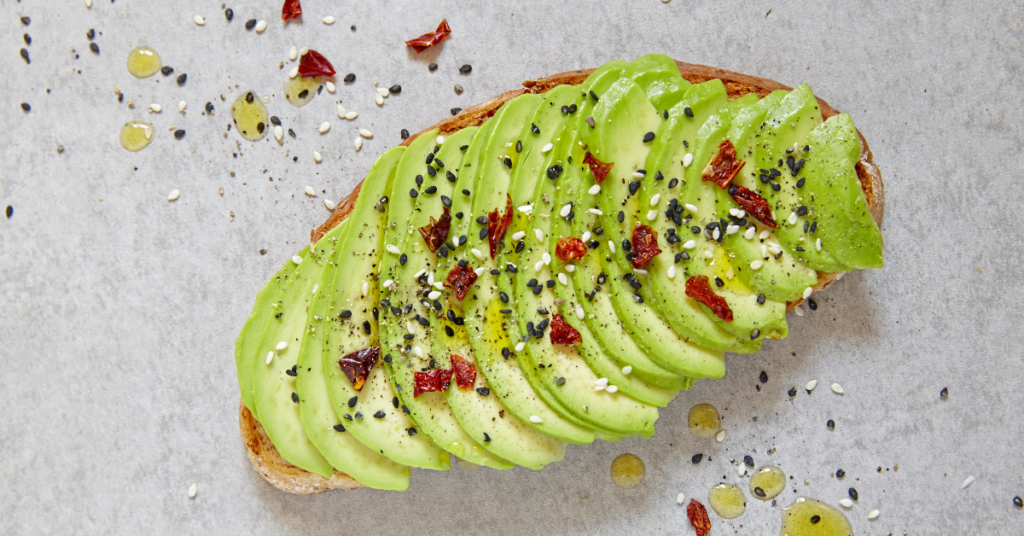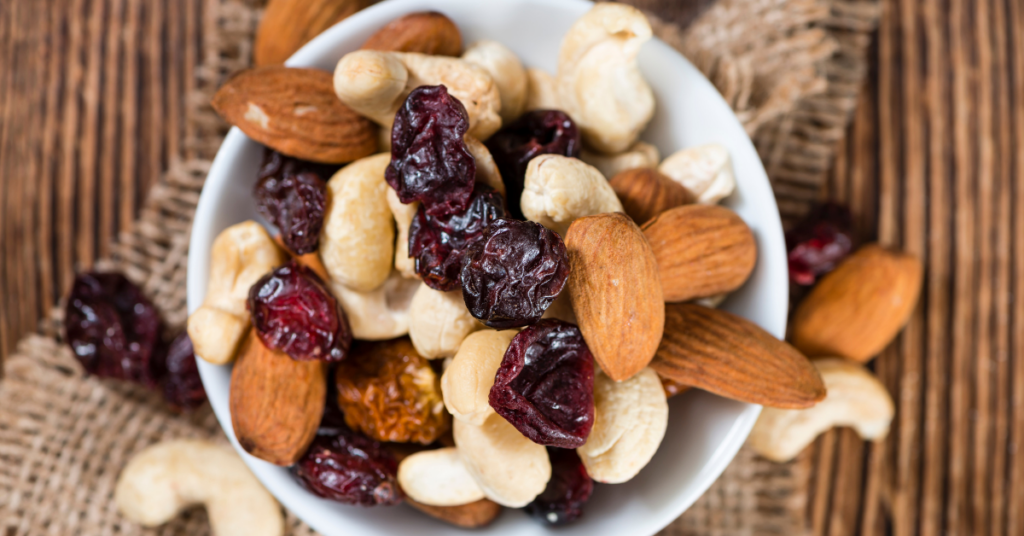Article At a Glance:
- Food is more than fuel — it carries environmental data, and eating out of sync with your local environment can disrupt metabolic harmony.
- Mismatched food signals (e.g., eating tropical fruit in winter) may contribute to inflammation, fatigue, and metabolic inefficiency over time.
- Mitochondria process food differently depending on season and light exposure, meaning eating foods aligned with your local environment may optimize energy and health.
Food Isn’t Just Fuel — It’s Information
Food isn’t just fuel, it’s information. Plants absorb their surroundings — sunlight, soil, water — and encode this into their very being, down to the electrons. Eating food grown in an environment that doesn’t match our own, hands our bodies mismatched information, creating a disconnect between the food’s origin and our current environment, which can subtly disrupt our system over time.
Imagine this: each meal carries the signature of its birthplace. A tomato ripened under the Sicilian sun isn’t just different in taste from one grown in a Japanese greenhouse; it’s fundamentally distinct. The light it absorbed, the soil it rooted in, the seasons it endured all imprint an environmental code into its makeup.
Our bodies evolved consuming local produce that specifically reflected the same light, air, and soil we were exposed to. Once ingested, different sensors in our body — nerves, microbiome, all the way down to the mitochondria — are built to interpret this code. When the food’s story aligns with our surroundings, everything is in sync. But nibbling on a tropical banana in a snowy urban apartment? That’s like playing static through our system.
Mismatched Food = Metabolic Static
This “static” is the misaligned data I’m talking about. Picture being in Minnesota during midwinter: short days, dim light. Your eyes and skin register this, signaling your body to conserve energy.
Then you eat a pineapple from Costa Rica, grown under intense equatorial sun. Your gut receives signals of abundance and heat, which are completely out of sync with what your eyes and skin are conveying. This mismatch is likely causing the system to glitch.
It’s not science fiction; it’s intuitive. Nature operates in harmony: food, place, and body speaking the same language. Disrupt this, and you invite chaos.
How This Chaos Manifests: Inflammation & Fatigue
What does this chaos manifest as? Inflammation, to some level. It’s the body’s way of signaling, “Something’s off.” A bit of irritation sparks, a few extra free radicals emerge, and inflammation simmers.
Initially, it’s subtle, maybe some bloating, a dip in energy, a vague sense of unease. But it’s real. One meal like this isn’t catastrophic, but make it a habit like many of us do with globally sourced grocery aisles, and it’s not just a blip. It’s cumulative.
Health is an asset you can spend, but not earn. Your decisions determine the longevity of your depreciation. And this is where it gets tricky. A single imported avocado won’t derail you, but over years or decades, things begin to add up.
Assuming one meal a day with a mismatched food over 20 years, you’re at 7,300 meals nudging your internal mechanisms off balance, fostering inflammation, altering your metabolic processes. This could account for 20-30% of extra weight, dwindling energy, and the uphill battles we’re all promised to face health-wise.
It’s not headline-grabbing — “Imported Bananas Killed Your Nana” — but it’s a slow leak, draining vitality bite by bite.
Why Your Lifestyle Makes This Better — or Worse
Here’s the twist: it’s not just about mismatched food, it’s the entire system. Nothing in health exists in isolation.
If you’re excelling everywhere by getting quality sleep, ample sunshine, staying active, and managing stress, then this might barely register. Your gut grumbles, inflammation ticks up slightly — maybe 1-5% — but you’ve got the resilience to brush it off.
You’re a well-oiled machine; a bit of bad data doesn’t cause a system-wide breakdown. But if you’re already struggling with sleepless nights, confined indoors under artificial lights, high stress, and a sedentary lifestyle, then that same out-of-place food hits harder.
It could be a 20-30% impact, or more, because your system lacks a health buffer. Your internal mechanisms are already compromised, baseline inflammation is high, and that foreign pineapple is like rubbing salt in the wound.
Everything is interconnected. Hammer the basics of wellness, and this is a footnote; neglect them, and it’s probably a player in your decline.
Before you ask about the science, I want you to step outside and observe: nature thrives on coherence. A deer grazes on the grass beneath its feet, not on feed shipped from another continent.
Our ancestors consumed what grew around them. They had berries in summer, roots in fall. Their eyes saw the same sun as the plants, and their bare feet felt the same earth. The same goes for modern tribal cultures who follow the same practices.
Now? We’re eating Colombian bananas in the middle of winter, under fluorescent lights on a different continent, and our bodies are confused. This mismatch delivers incorrect information — the internal sensors of our body anticipate one thing, while the external sensors of the eyes and skin report another — and inflammation ensues.
How significant is this? Judging by the spectrum of health outcomes, it varies. For the average person with less than optimal habits and a global diet, I’d estimate that it’s 5-10% of why we’re heavier, more fatigued, and less healthy than we should be.
Optimize your lifestyle, and it’s less; let things slide, and it’s more. Either way, it’s a factor.
The Science: Light, Mitochondria & Metabolic Disruption
Now let’s add some science. Every bite you take started as a ray of sunlight. Plants catch it, turning it into carbs, fats, or a bit of protein: bananas full of sugars, avocados rich with lipids, lentils packing protein.
That’s light turned into food. Digestion breaks it down into bits of energy for your mitochondria, the tiny power stations keeping you alive.
But here’s the wild part: food is coded with the information of where it grew, and your body interprets that code differently depending on the environment you’re in. The problem comes when food is eaten in a different environment than where it was grown.
Let’s take the carbs from a banana — they send energy to a spot in your mitochondria that would be very active in summer’s long, bright days. However, in winter’s short, cold gloom, that spot’s likely half-asleep due to the impact seasonal light variations have on our circadian biology, and the banana’s summer signal jams it up, causing static, spitting out waste like sparks from a fireplace.
Those sparks — known as Reactive Oxygen Species or ROS — can damage your mitochondria’s efficiency, and over time, that can cause trouble: fatigue, inflammation, and a sluggish metabolism. Switch to summer, where your surroundings better match the environment where the banana was grown, and those carbs hum along efficiently — less worry of sparks creating damage, resulting in smooth energy.
It’s not just carbs; food from far-off places can do this; the greater the disparity, the greater the disruption. Your ancestry plays a role here too, but that’s a story for another day (if you’re curious).
Bottom line: eating out of sync with your local environment has an impact on your mitochondria, throwing off metabolic efficiency and creating chaos in your body.
All this without even talking about calories.
Where to Go From Here?
So what’s the move? Let nature serve as your authority. Base your eating choices on seasonal cycles rather than imported temptations.
Go back to what’s around you, prioritize local fresh foods, grown by you or a local farmer. Summer’s long days offer berries or greens from nearby; winter’s short gloom calls for roots or meat that match your spot.
Skip the tropical imports unless you’re in the tropics. Your body’s been reading local codes forever, so give it a shot. Notice how you feel: less drag, more spark? That’s your mitochondria talking.
It’s not about chasing perfection or overhauling your life, it’s just leaning into what’s growing now, where you are. Nature’s been at this longer than any of us, so maybe it’s best to trust it over the supermarket glow.
LiveComplete Takeaways
- Food carries a code. It’s more than fuel — sunlight, soil, and seasons imprint data your body reads. Local, seasonal eating keeps your metabolism humming; far-off foods scramble it.
- Mismatch sparks trouble. Eating tropical fruit in winter confuses your system — mitochondria falter, inflammation simmers, fatigue creeps in. Over time, it’s a slow drain.
- Lifestyle sets the stakes. Optimized basics — sleep, sunlight, movement — soften the blow. Stressed and sedentary? That out-of-sync meal hits harder, amplifying the mess.
- Sync with nature. Let seasonal cycles steer you — favor fresh, local picks. Summer berries, winter roots — match your spot. Test it: feel less drag, more spark? That’s the proof.
The food you eat carries a code — sunlight, soil, seasons stamp it in. Eating local keeps your body humming; eating out of sync, like tropical fruit in winter, scrambles the signals. That mix-up can spark metabolic stress, inflammation, and energy dips.
A strong system shrugs off the odd mismatch, but if you’re already worn down, it hits harder. Want to stay sharp? Match your plate to your place — go for seasonal, local foods when you can.
Sources
- Chaix, A., Zarrinpar, A., Miu, P., & Panda, S. (2014). Time-restricted feeding is a preventative and therapeutic intervention against diverse nutritional challenges. Cell Metabolism, 20(6), 991–1005. https://doi.org/10.1016/j.cmet.2014.11.001
- Price, W. A. (1939). Nutrition and physical degeneration: A comparison of primitive and modern diets and their effects. Paul B. Hoeber, Inc. Retrieved March 31, 2025, from https://blog.beinsa.info/wp-content/uploads/2019/03/Food-and-Physical-Degeneration.pdf
- Oregon State University Extension Service. (n.d.). Environmental factors affecting plant growth. Oregon State University Extension Service. Retrieved March 31, 2025, from https://extension.oregonstate.edu/gardening/techniques/environmental-factors-affecting-plant-growth
- Engel, G. S., Calhoun, T. R., Read, E. L., Ahn, T.-K., Mančal, T., Cheng, Y.-C., Blankenship, R. E., & Fleming, G. R. (2007). Evidence for wavelike energy transfer through quantum coherence in photosynthetic systems. Nature, 446(7137), 782–786. https://doi.org/10.1038/nature05678
- Stolla, M. C., & Bailey, R. G. (2023). Physiology, circadian rhythm. In StatPearls. StatPearls Publishing. Retrieved March 31, 2025, from https://www.ncbi.nlm.nih.gov/books/NBK526105/
- Thorne, H. C., Jones, K. H., Peters, S. P., Archer, S. N., & Dijk, D. J. (2009). Daily and seasonal variation in the spectral composition of light exposure in humans. Chronobiology international, 26(5), 854–866. https://doi.org/10.1080/07420520903044315



